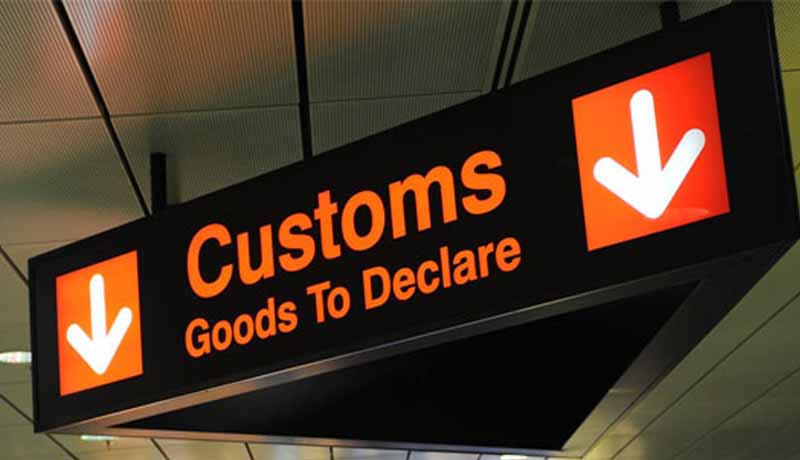Introduction
Long-inoperative claims contain “more cruelty than justice.” This statement stresses the importance of the time limit for a party to file a claim against a different party. This results in statutes prescribing statutory time limits for the presentation of claims. This provision in accordance with Article 28 of the Customs Act, 1962 [hereinafter “the Act”]. Under Article 28 of the Act, if the official would serve a show- cause notice on that amount if any duty was levied, short or incorrectly refunded or if any interest was not paid, partially paid or incorrectly reimbursed. When the duty deficiency is caused by something other than collusion or wilful misstatement or suppression of facts, SCN must be issued within one year of the relevant date. The enhanced time limit is five years in the case of collusion or any wilful misstatement or suppression of facts by the importer or exporter or any agent or employee of the importer or exporter.

Section 28AAA
It was added to the Customs Act of 1962 by Section 122 of the Finance Act of 2012. Section 28AAA allows for the recovery of customs duty from a person who obtained an instrument through collusion, wilful misstatement, or suppression of facts and used the instrument by someone other than the person to whom it was issued. The purpose of inserting section 28AAA has been explicated in the highlights of budget changes as providing for the recovery of duties from the person to whom an instrument, such as credit duty scrips, was issued where such instrument was obtained through collusion or wilful misstatement or suppression of facts.
The Bombay High Court had affirmed in the case of Jupiter Exports[1] that duty under Section 28 could only be recovered from “a person chargeable to duty,” which would be the importer in the case of import duty and the exporter in the case of export duty. The High Court then confirmed that import duty cannot be recovered from the exporter. Because the exporter is not the importer, he cannot be made liable for duty, as the demand for duty must be based on law, not equity or moral considerations. The importer in this case used an invalid licence, which had nothing to do with the fraud committed by the goods’ exporter.
East India Commercial Co. Ltd. Calcutta v. Collector of Customs
Is one of the earliest landmark decisions that establishes numerous legal propositions in the context of licences obtained through misrepresentation. Following that, a slew of decisions were issued by courts across the country in the context of transferable licenses/scrips obtained through fraudulent means.
A review of all of the aforementioned decisions (which were initiated prior to the introduction of Section 28AAA) reveals that the customs authorities initiated action for duty recovery from the transferee-importer (and in some cases, jointly and severally with the exporter), who was frequently not even a party to the transferor/fraud. exporter’s In all of these cases, the exporter/transferor played a role in obtaining the scrips/licenses from the licencing authorities through misrepresentation, etc.
A review of both sections 28 and 28 of the AAA shows that they have both been drafted for the purposes of the recovery of duties paid or avoided by fraud. While Section 28 specifies a five-year time limit, Section 28 AAA does not. The only mention of section 28 in section 28 AAA is that any action taken under section 28 AAA would be without prejudice to any action taken under section 28. But even so, there is no provision in section 28 AAA that incorporates the five-year limitation period in cases of wilful misrepresentation, collusion, or suppression of facts, as provided in section 28.
In this case, the question is whether there is a time limit to take action against a person who obtain a scrip/instrument by fraudulent means. The reply is no. This could lead to an atrocious situation with the consequences as follows:
- The advantages accumulated under a scrip/instrument can be reversed by the Department at any time, and action can be initiated without regard to any limitation period.
- The Department is independent to take initiatives under section 28 AAA in relation to the same transaction at any time, even if show cause was issued earlier in relation to that transaction under section 28 and the matter was settled after litigation. Section 28 states that any action taken under section 28 AAA is not prejudicial to any action taken under section 28.
Another legislative shortcoming in this section is that the authorities, even after initiating proceedings against a fraudulent exporter, can still pursue the importer concurrently because the section’s proviso states – “that the action relating to duty recovery under this section against the person to whom the instrument was issued shall be without prejudice to an action agaisnt the person to whom the instrument was issued shall be without prejudice to an action agaisnt the person to whom the instrument was issued shall be without prejudice to an action aga This, in effect, opens the door to future litigations in which importers are pursued by the Department for the same issue regardless of whether duty has been recovered from the exporters or not.
In this respect, it is clear that the importer and exporter are not treated on an equal footing under the Customs Act. While duty can be demanded against an importer who has engaged in collusion, wilful misstatement, or suppression of facts within the last five years, there is no time limit on demanding duty against an exporter who has obtained scrips / instruments through collusion, wilful misstatement, or suppression of facts. This situation is not only inequitable, but also discriminatory.
The Department may argue that the exporter has obtained fraudulently the higher value script by misclassifying the exportation goods in the situation where this question relates to the interpretation of a particular entry in the schedule for Chapter3. Even a genuine exporter may in this case be slapped with a SCN without a time bar under section 28AAA.
As a result of this, Section 28 of the AAA has to be amended and, in accordance with Sections 28 of the Act, a maximum period of five years to issue SCN must be incorporated.
[1] Writ Petition No. 794/2002
[2] 1983 (13) ELT 1342 (SC)
Avani Malhotra










